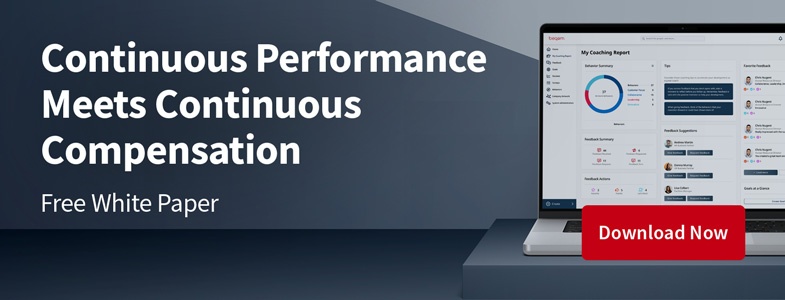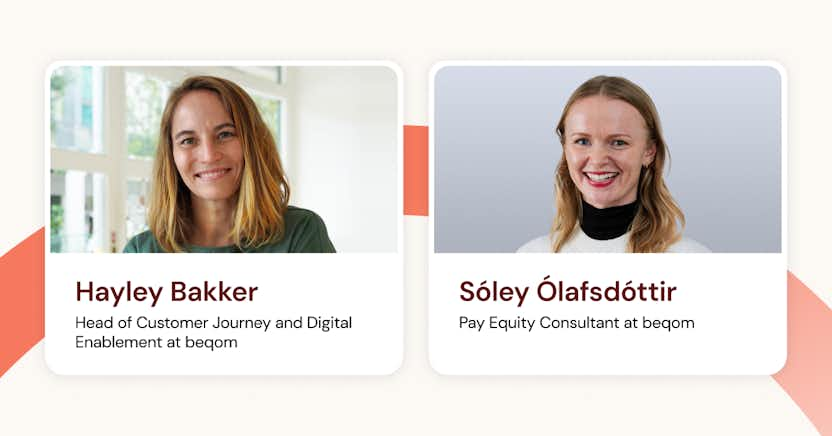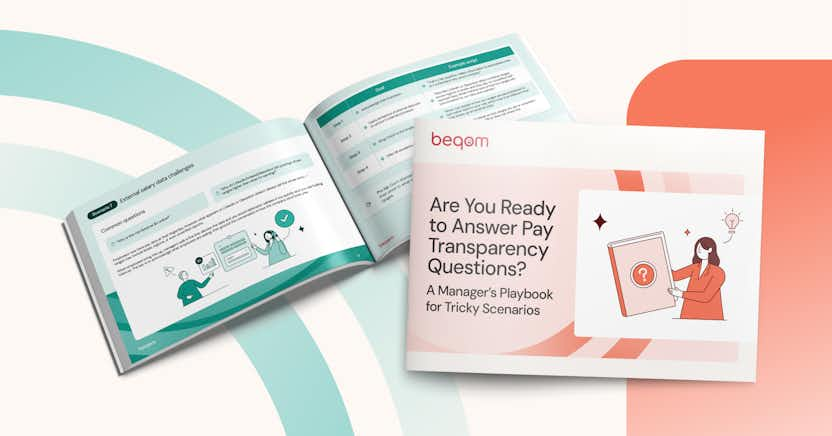A Passport to Performance Outcomes

Learn more about the following beqom products
Is “performance management” a misnomer? Or worse, a pipe dream? Can we really manage the performance of another person? Or, if only the individual can truly control their own behavior, how can we facilitate and provide what employees need to produce their best performance? The answer may lie in the employee passport approach.
Managing performance is a flawed concept
The very nature of the idea that we can manage anybody else’s performance is probably misleading at best. People manage their own performance, and we can inspire and drive them in different ways, but ultimately it’s the individual who has to perform, the individual who decides where they put their time and energy, and the individual who decides if they are going to give it 70% or 100% that day—or indeed every day.
So perhaps we’ve been misnaming this topic of performance management all along. Yes, there have been attempts at finding a better term, and we’ve seen the emergence of names such as “performance development” and “performance enablement”, but they have not quite caught on.
So where do we go from here when it comes to performance management? Do we believe that with a process of continuous feedback and regular check-ins, as has become so popular in recent years, we can now manage people’s performance better? I’m not convinced that’s the case or that we are even addressing the right question.
Achieving goals is not the only thing that matters
Performance management by its design was built to drive accountability, to ensure that managers and employees discussed performance so that the business could get the best performance outcomes. While multiple goals frameworks were created to drive outcomes (some with more success than others) many organizations saw the gap that goals often created.
One danger of focusing only on goals is that employees most often can find ways of achieving goals, but the behaviors used to achieve those goals may not always be aligned with the organization’s values. Some organizations have learned that lesson the hard way, with employees neglecting customer relationships or even engaging in illegal activities in order to meet targets. So to mitigate that problem, HR now typically adds in organizational values and behaviors to demonstrate that those also hold importance when it comes to assessing overall performance.
The dangers of subjective assessment
However, the flaw in that design is that those value assessments come from a subjective perspective, relying on a manager’s personal view as to whether you were, for example, collaborating effectively or putting customers first to the standard the organization expected.
Therein lies the challenge. When we leave it to one personal opinion we have a natural blindspot in our design, and an opening for a plethora of biases. Who’s to say that a given opinion is well-informed or has the right level of insight or was based on sufficient occasions to observe the behaviors? How do we truly understand what the real outcome was?
Looking at the person, not just the goals
Performance management is getting it wrong. It is not about the inputs, the process, the type of goal, etc. Performance is people-focused and personal. It’s about the human being’s experience and direct relationship with their manager, which can build a foundation of trust. To deliver an engaging experience requires feedback, perspective, ownership by the employee, a sense of purpose, opportunity for growth, and connection to the larger team.
Peak performance is a distant dream if we cannot bridge the experience gap that currently exists.
Time for some innovation
Enter the “employee passport” concept, an innovative new means of addressing the age-old question of how we fairly assess and address performance.
The passport provides concrete evidence of an employee’s performance, growth, and development, as perceived by not only their managers but their peers. It includes documented and regular peer feedback, manager check-ins, agile goals, and flexible reviews.
The passport approach brings to life an in-depth analysis of the individual. The employee can gain an understanding of the behaviors they demonstrate and those they don't, and use the insight to shape their development and brand within the organization. The passport helps an employee:
- Gain a deep understanding of their blind spots through 360° insight
- Access a personalized dashboard to gather insights
- Agree and track their development with their manager
- Own and drive their checks-ins through data-driven insight
- Set and action their personal goals
- Request and give feedback from anyone in the organization
Perhaps most importantly, the passport puts accountability into employees’ hands. Employees can actively own their passports to demonstrate the feedback, behaviors, and goals accomplished throughout the year.
The passport can positively promote the employee to seek more feedback, to update and progress their goals, and to showcase contributions to date. It levels up the relationship between the manager and the employee, ensuring an adult-to-adult discussion where both the employee and the manager come with objective data to the performance discussions. With two sets of objective data, we reduce the subjectivity and bias that can often feature as part of performance discussions.
More importantly, the performance conversation can now focus on true outcomes, objectively assessed, and can join both parties—manager and employee—in managing performance together. A passport to performance outcomes can enable the type of performance management practices that put accountability at the center, while at the same time building trusted relationships.
Implementing a passport to performance approach
To implement a people-centric passport approach and deliver an engaging employee experience requires having a performance system in place that empowers the necessary elements of an employee passport, such as continuous feedback, supported coaching, check-ins, 360° surveys, and agile goal-setting. The information derived from these activities then needs to be made available to employees and managers so that they can own their own growth and development, make data-driven decisions, and continuously improve performance.
For more information on how to implement a passport approach to performance management, contact beqom and schedule time with one of our performance and rewards specialists.








